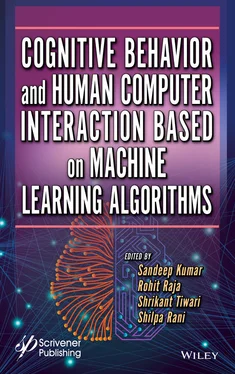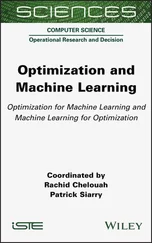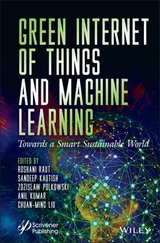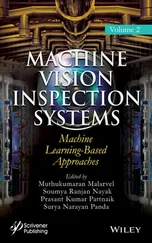Interactive user behavioral predicting systems
Adaptive interaction observatory changing systems
Group interaction model building systems
1.1.1 Interactive User Behavior Predicting Systems
Human behavior predicting system interface is designed and deployed as the interaction and communication between users and a machine, an automatic dynamic, versatile system, through a user-machine interface [2]. There are strongly related real-world assumptions, and aspects are there to distinguish the domain of user-machine automatic dynamic, versatile systems, and user-computer interaction. For 50 years onward, the investigations on research in this domain are going on with different interactive human predicting systems that are evolved with the necessary propagated embedded events via a hardware and software interaction built-in displays. The best and emerging ambient designs of user interaction automatic predicting system applications have a right market place and gain values vertically in all the verticals for many products and services in various sectors like medical, transportation, education, games, and entertainment, which are the needs of the industry [3].
1.1.2 Adaptive Interaction Observatory Changing Systems
An adaptive interactive observatory system acquires its psychological aspects to the independent user based on inferences of the user prototype acquisition and reports involving activity in learning, training, inference, or necessary constraints of the decision process. The primary and needful goal of adaptive interaction observatory changing system interfacing adaptation is to consider unique perceptual or physical impairments of individual users; it allowed them to use a dynamic system more flexibly, efficiently, with minimal errors and with less frustration. An adaptive interaction observatory system interface is an embedded software artifact that improves its functionality to interact with an individual user by prototype model, thereby constructing a user model based on partial psychological considerable experience with that user [4].
As there are widespread of www, internet, and gopher services among the population day by day, more sophisticated variety of softwares, emerging technologies involve hardware events, gadgets, widgets, and events that are more and more highly interactive and responsive. Only limited early individual novice people are doing programs on punch cards and submitting late nights and overnight jobs, and subsequently time-sharing systems and debug monitors, text editors have become slower and slower and depend on multiple cores and moving forward to parallel processing. The latest emerging operating systems and real-time operating systems support various interactive software like what you see and what you get. The editor system software is too high for interactive computer games, most efficient and eminent embedded systems, automotive responsive, interactive, and adaptive conservative systems in layered interactive graphical user interfaces, and such subscribers and listeners are the key roles of adaptive interaction observatory changing systems. Such systems have been treated as an essential part of any business and academic lives with a trillion people depend on them to move toward their daily lives. Most academic work on machine learning still focuses on refining techniques and humiliating the steps that may happen at foreseen and after their invocation. Indeed, most investigations, conferences, workshops, and research interests, especially media and entertainment, virtual reality, simulation, modeling, and design, still emphasize differences between broader areas of learning methods. Eventually, evidenced by the decision-tree induction, the design analysis of algorithms, case-based reasoning methods, and statistical and probabilistic schemes often produce very similar results [5].
1.1.3 Group Interaction Model Building Systems
This chapter’s main objective is to describe the existing cognitive framework activities on group modeling information systems using synergy responsive dynamics. Such information systems are very few and necessary to be applied in hybrid organizations in order to support to increase in a wide range of business expansion and to take their strategic decisions. In this cognitive group interaction model building theory, the vital methodological dynamics were first located under the individual user interactions and then classified to allow an intensive idea to be given as a requirement analysis report for group activity prototype being a building system consideration [6]. The outcome of this brainstorming dynamics indicates the existing methods to propose a global view of interaction model systems are very rare. Also, three complex issues are needed to discuss: the inception of knowing the users’ knowledge, the interaction establishment of a consensus among users, and the main aspects of providing necessary facilitation.
A group interaction model building system is a dynamic system that is characterized by the following:
1 The responsive nature and strong interactions among the actors of the group;
2 An integration exists with necessary interactions, interrelations, and a strong dependency together;
3 An internal abstractive complex cohesiveness is subjected to their feedback; and
4 Fuzziness of the delayed behavioral reactions among the groups to assess or predict.
An organized framework is described here as a generalization of any organized approach, providing inference process and cohesive interactions in the detailed guidelines related to any aspect of group interaction model building. This analysis aims to obtain a broad view of a global vision of investigating the research that applied group interaction modeling systems. Using system dynamics allows drawing keenness to the lack of advanced interactive device management aspects to support the relating behavior aspects.
The group modeling system approach’s dynamic behavior is characterized below, emphasizing group interaction model systems.
The modeling process using two types of information systems [7]:
1 Modeling information systems versus group interaction model information systems.
2 Expert modeling systems versus team expert modeling information systems.
1.1.4 Human-Computer User Interface Management Systems
Human-Computer User Interface (HCUI) design mainly emphasizes foreseeing what computer interaction users need to do and approve that the human-computer interface has several elements that are flexible and easy to know, view, navigate, update, manage and modify, and use to provide facilitation in the form of events and widgets. HCUI accomplishes the related features from interpreting, layout design, interaction design, visual design, and information architecture.
A HCUIMS (HCUI Management System) is treated as not as a system but rather an interactive software architecture (an HCUIMS is also called a HCUI Architecture) “in which the design, deployment of various applications’ user interface is precise and clearly distinguished from that of other applications’ underlying its functionality.” Such an eminent division’s cohesive objective is to enhance the maintenance ease and adaptability with other softwares. Most of the Modern HCUIMS Architectures are designed with integrated development environments. With the help of abstraction of a user interface from the applications logic, syntax, and semantics, the code generation is better supported for customization. Even these architectures have been proven and useful with a high degree of interaction and had semantic feedback at manipulating interfacing boundaries between applications and HCUIs are difficult or impossible to maintain [8].
1.1.5 Different Types of Human-Computer User Interfaces
Читать дальше












